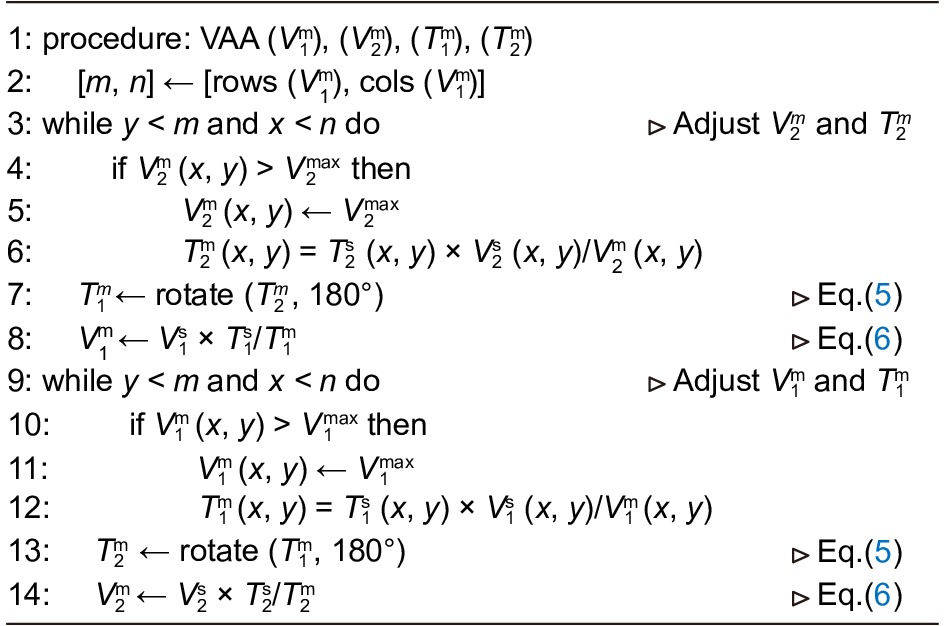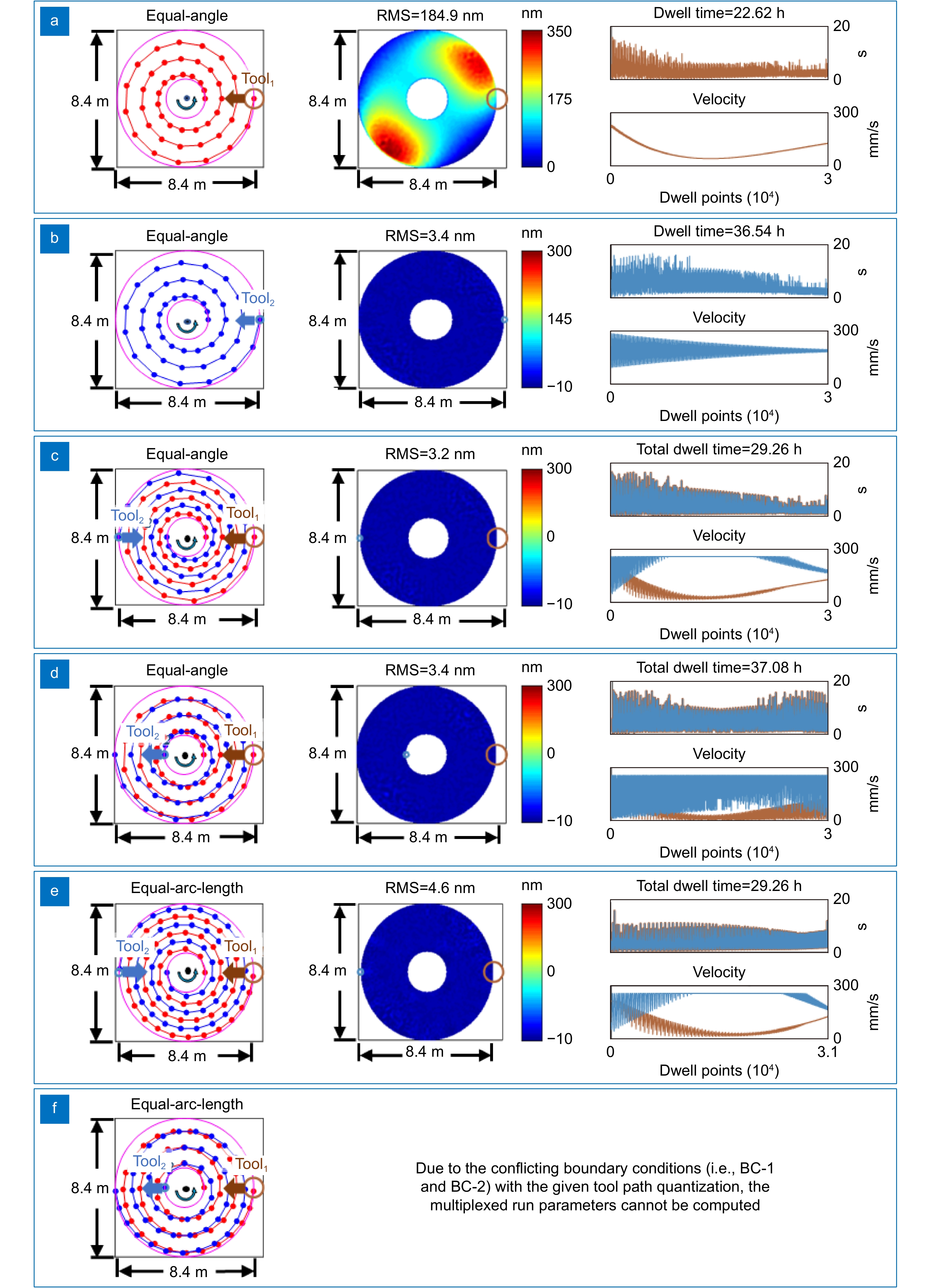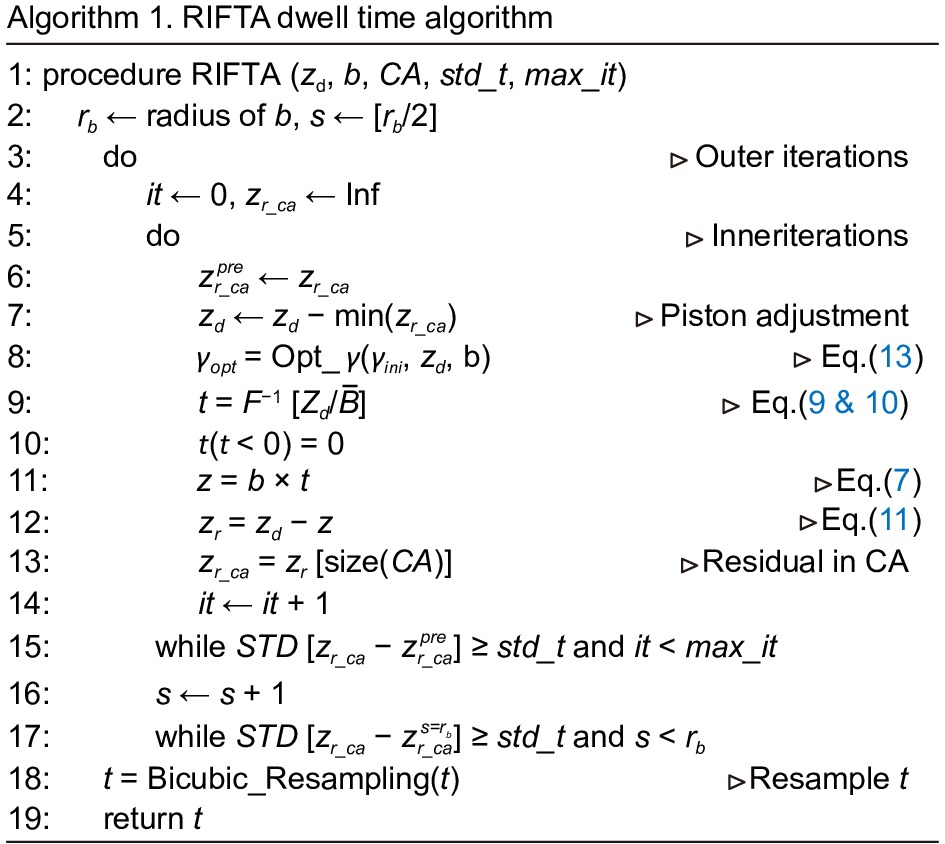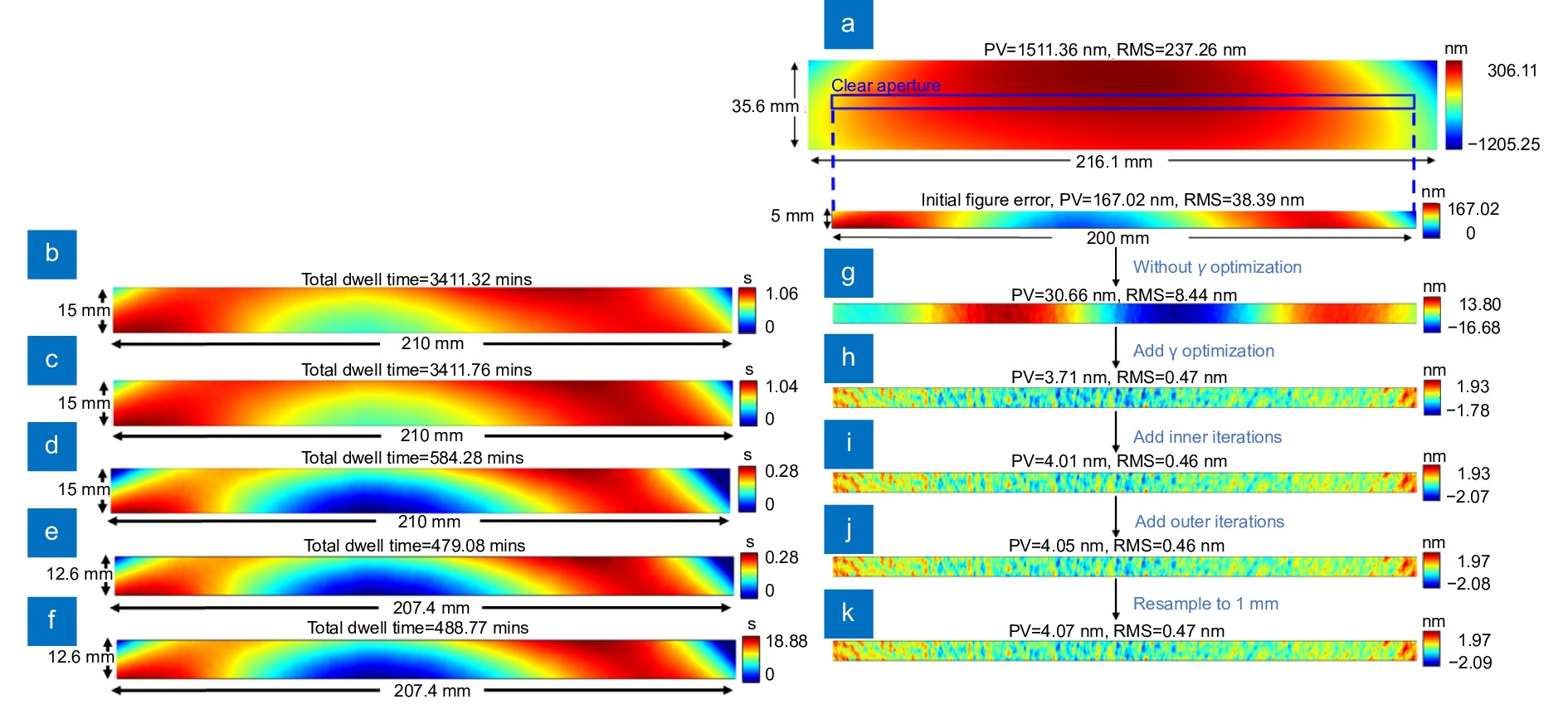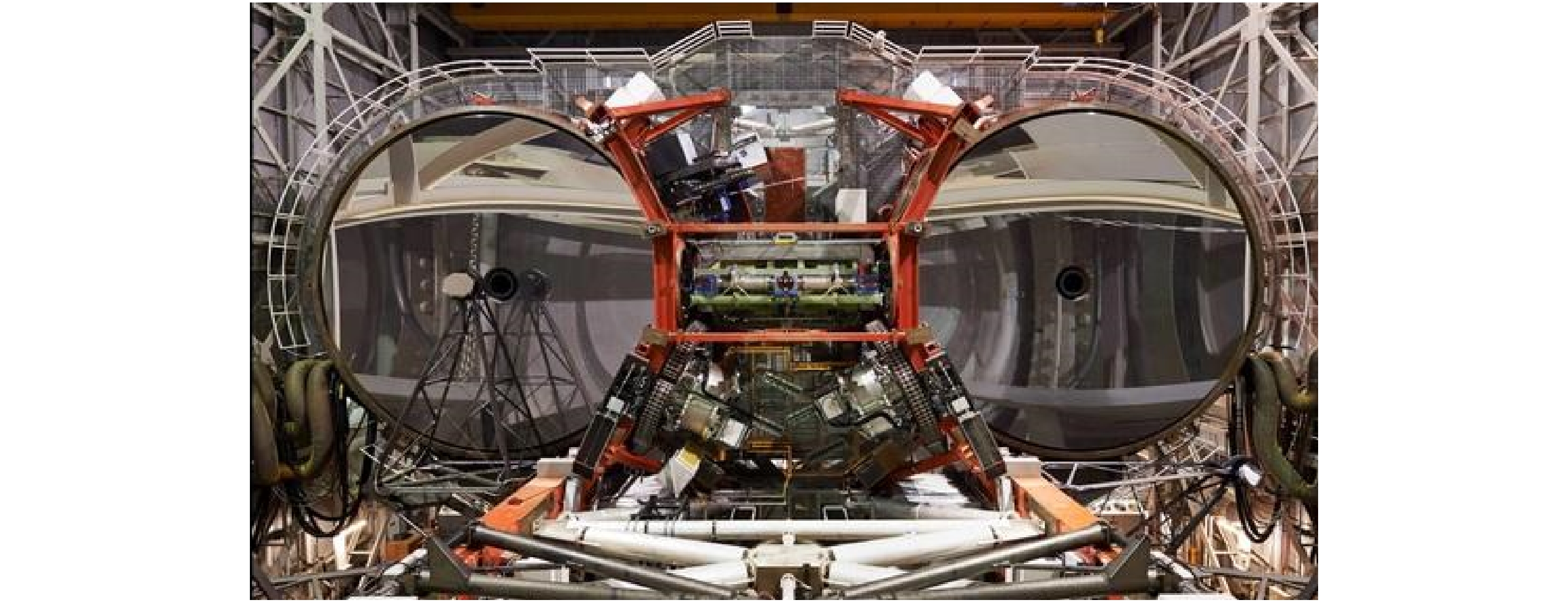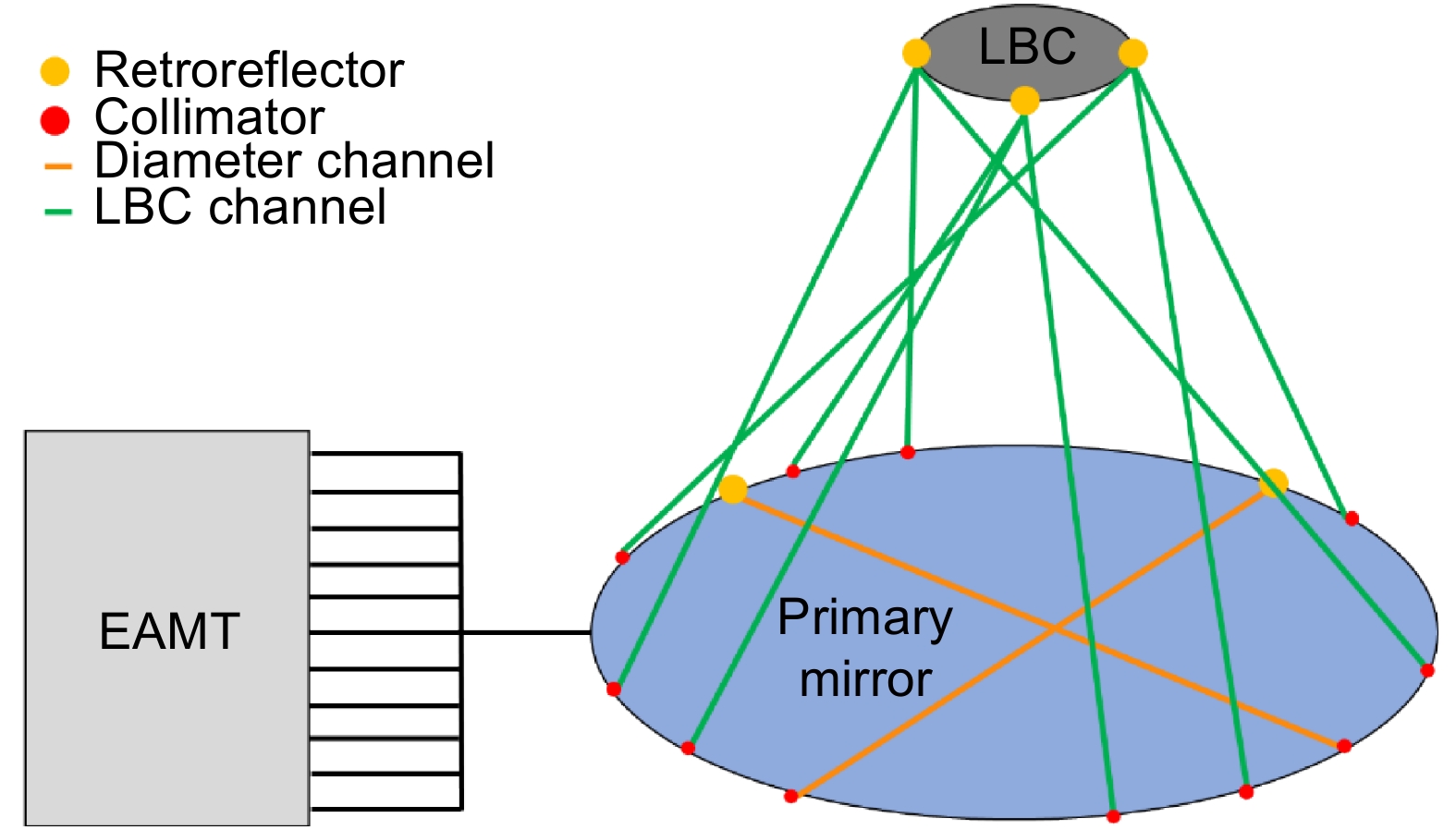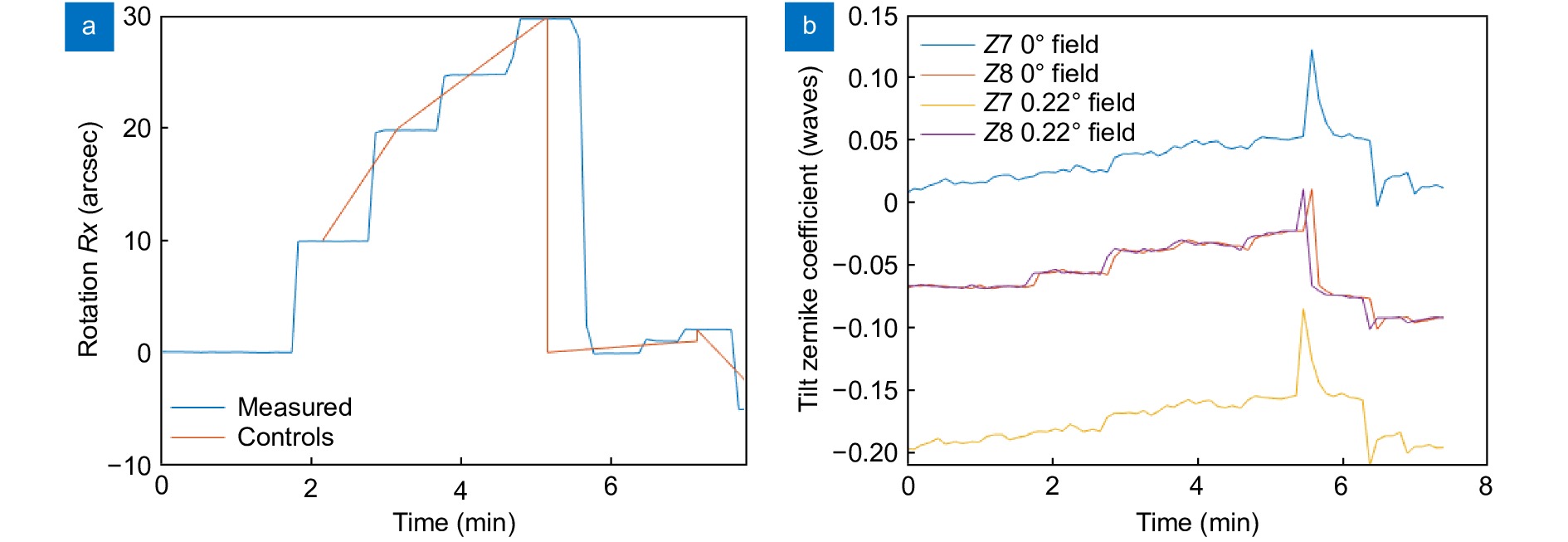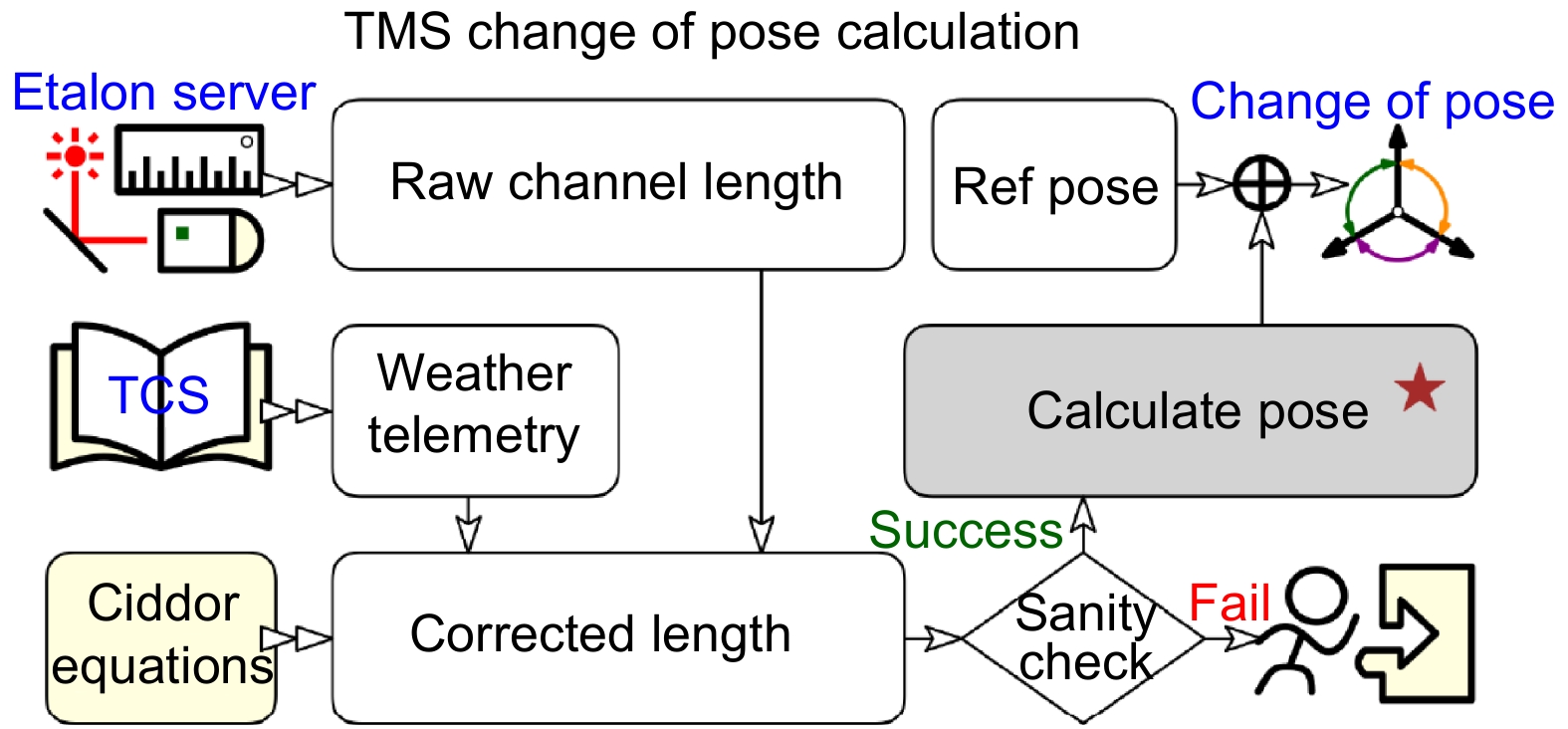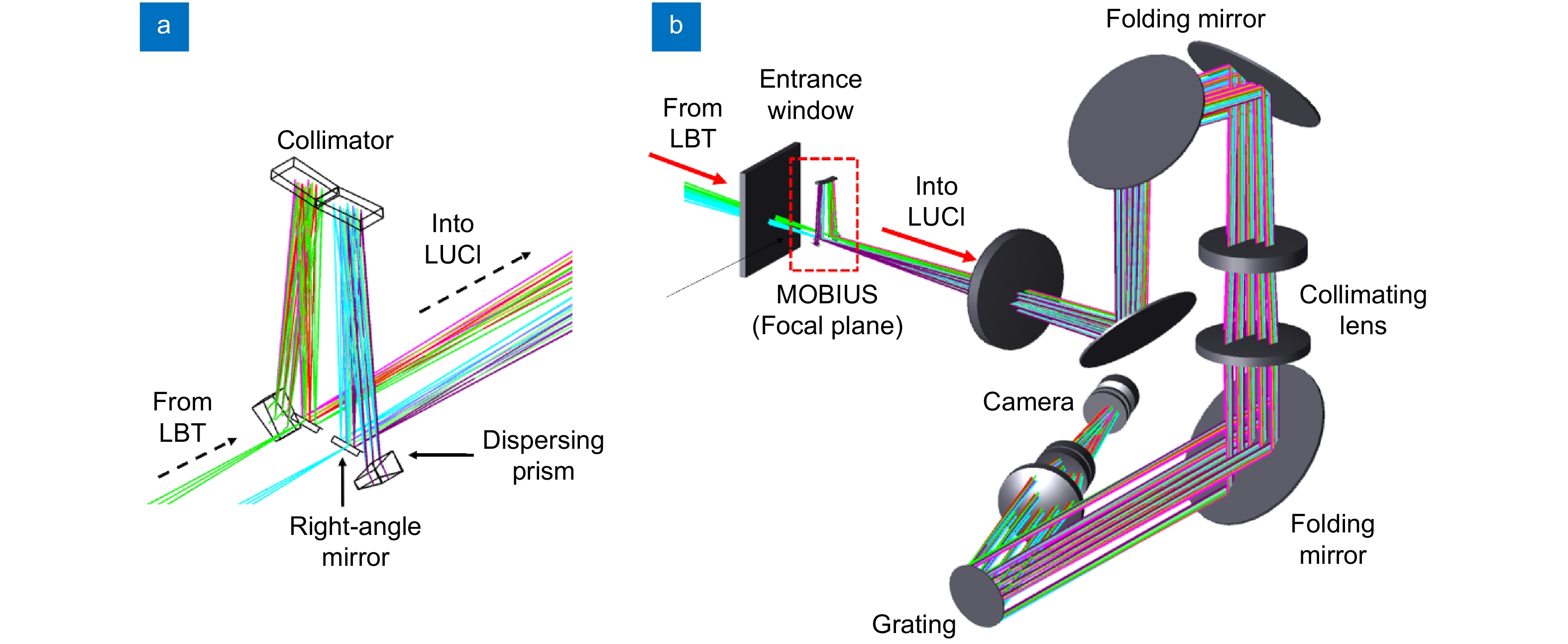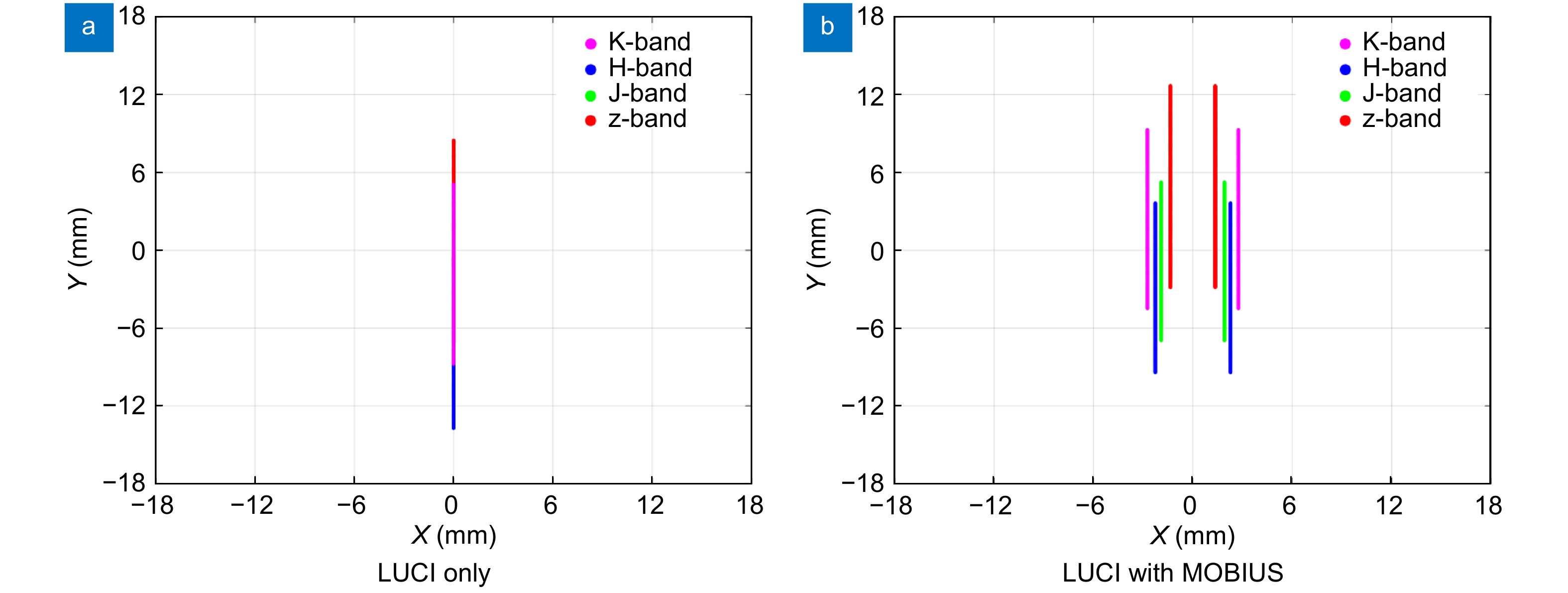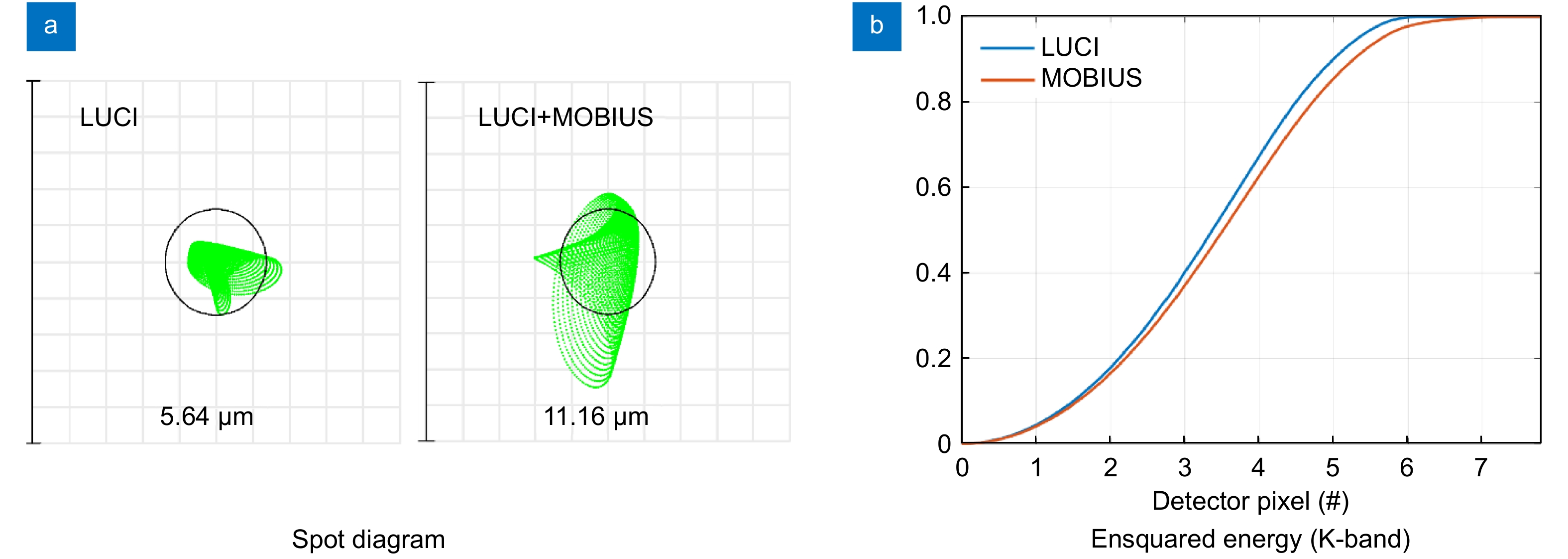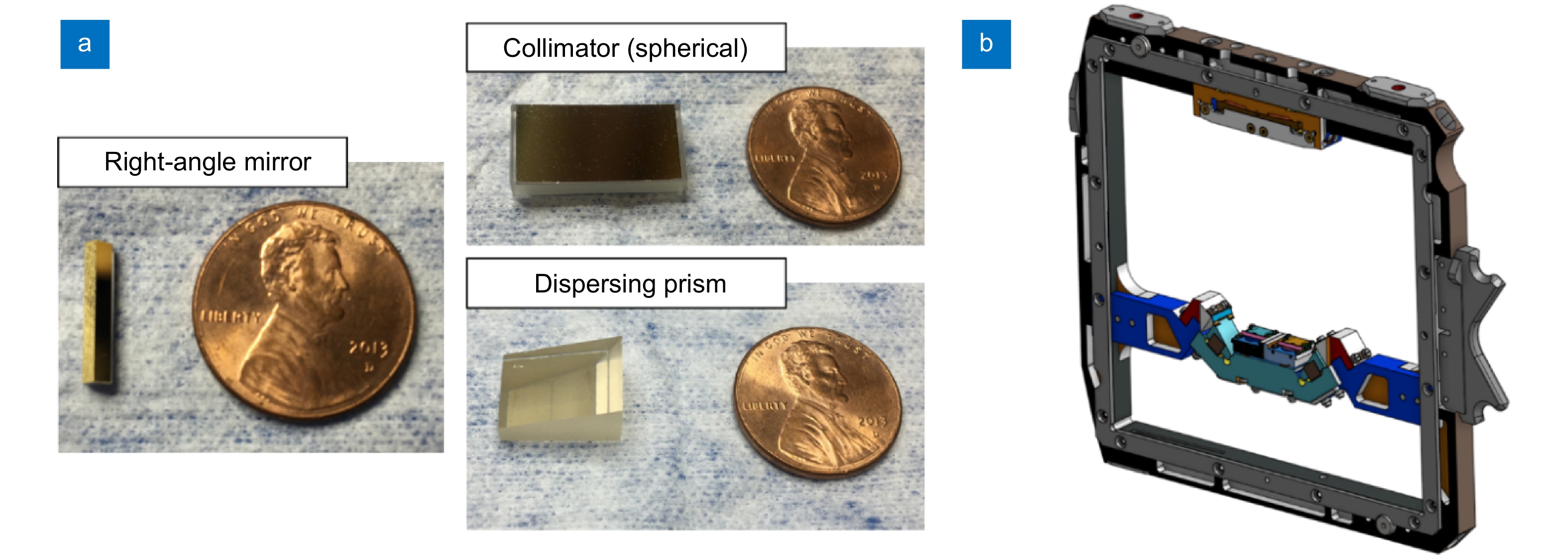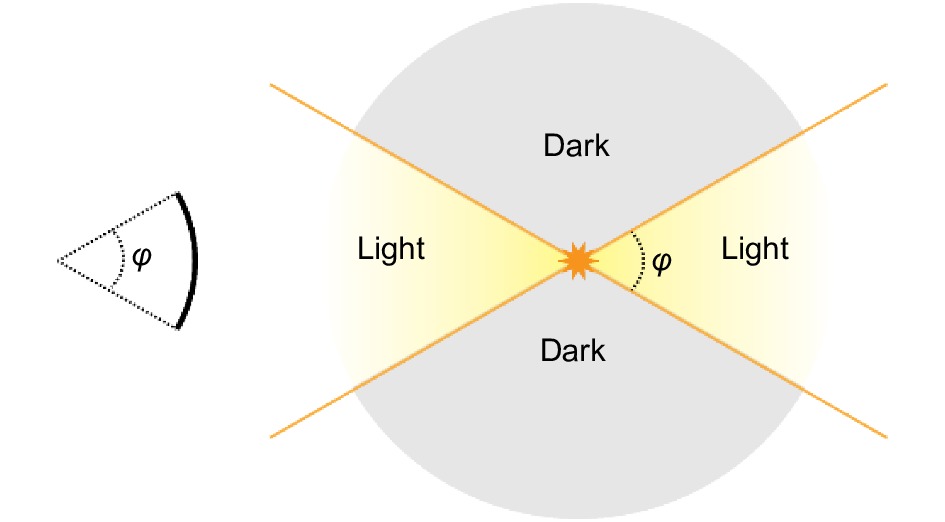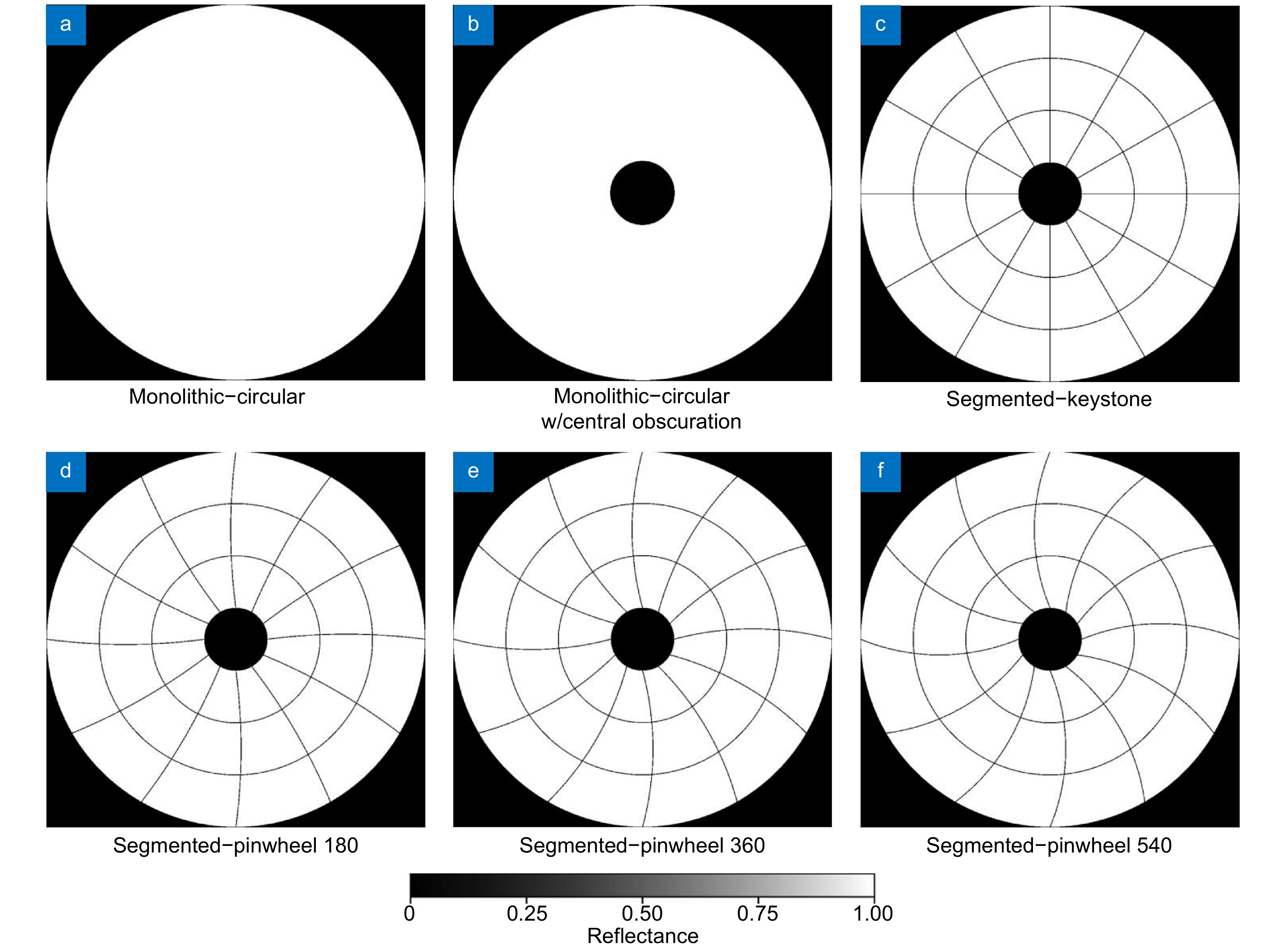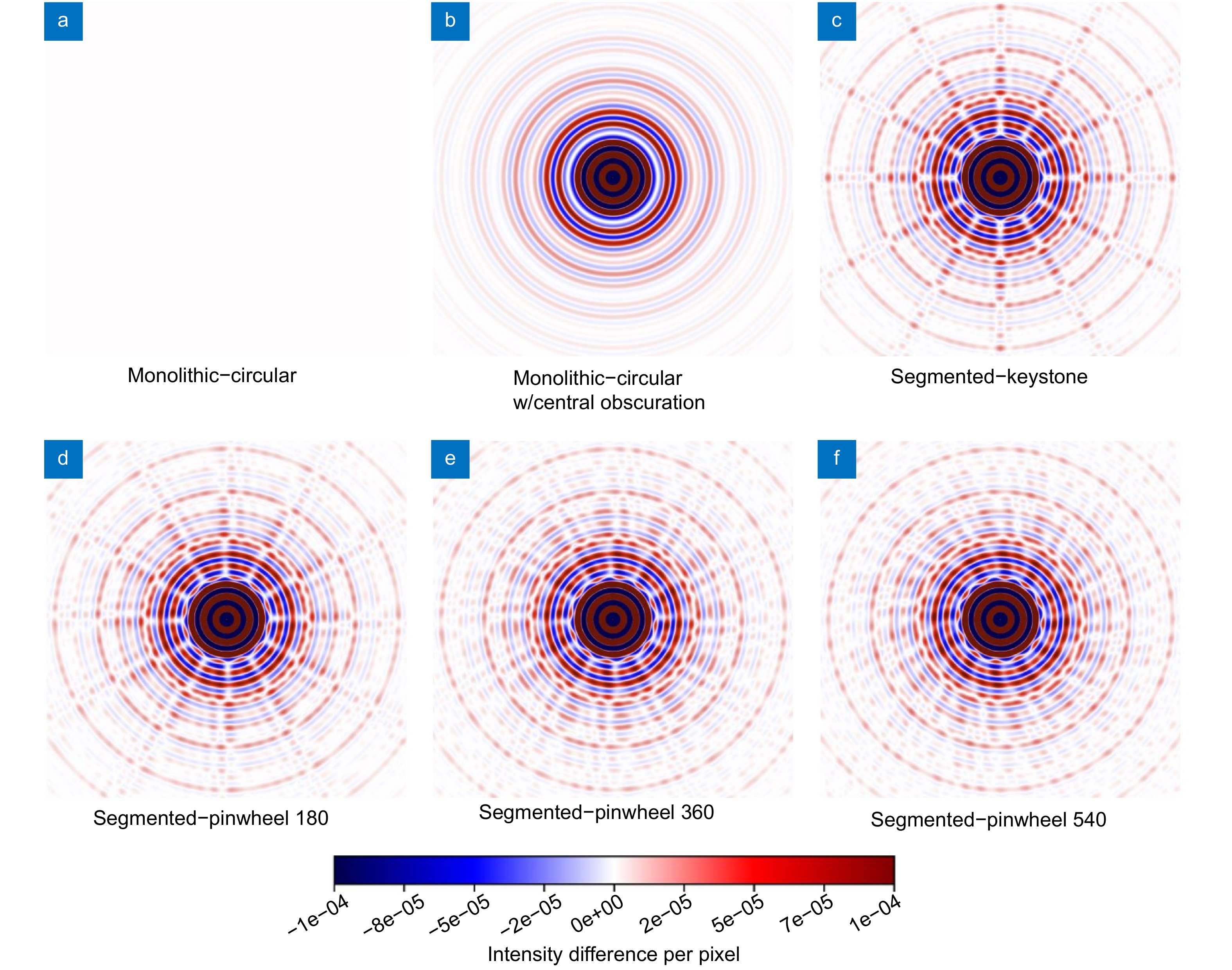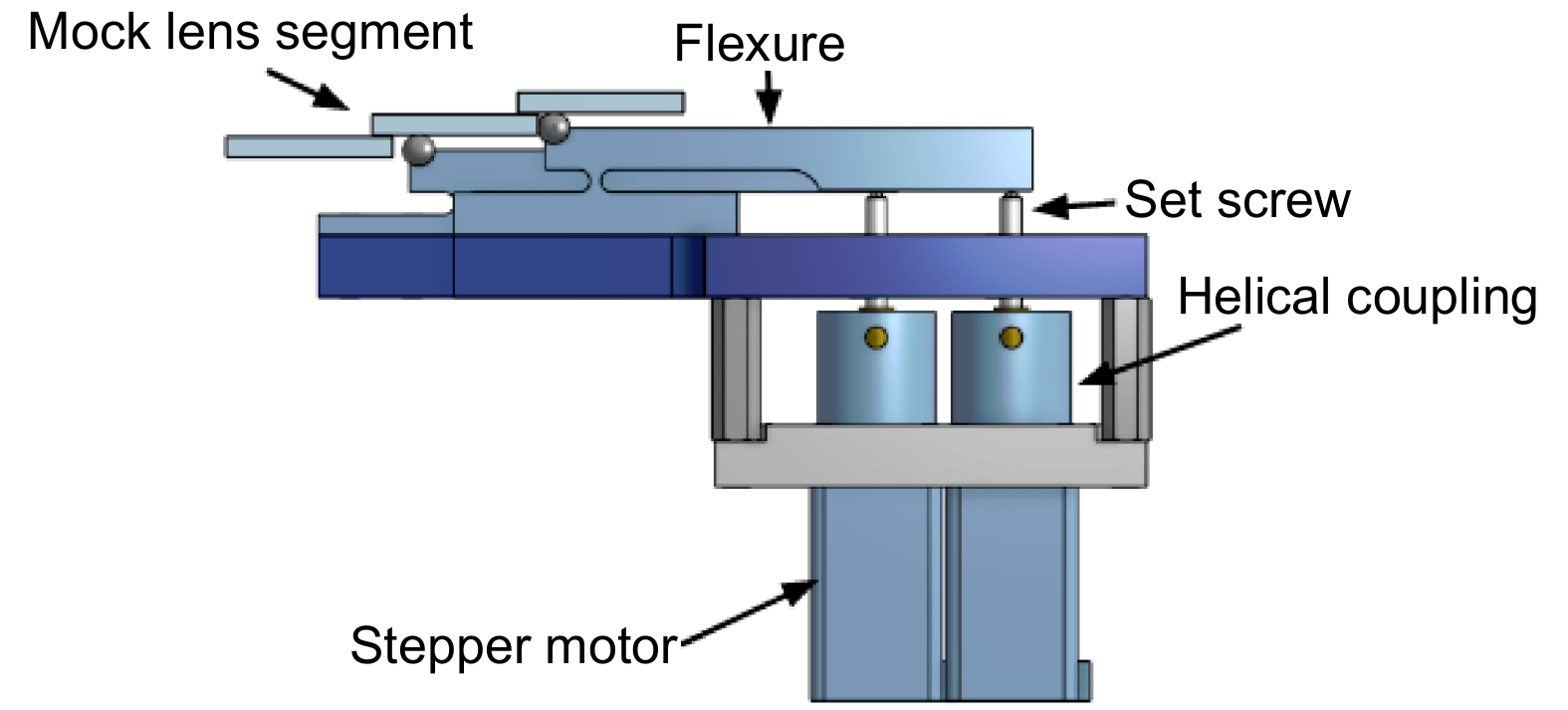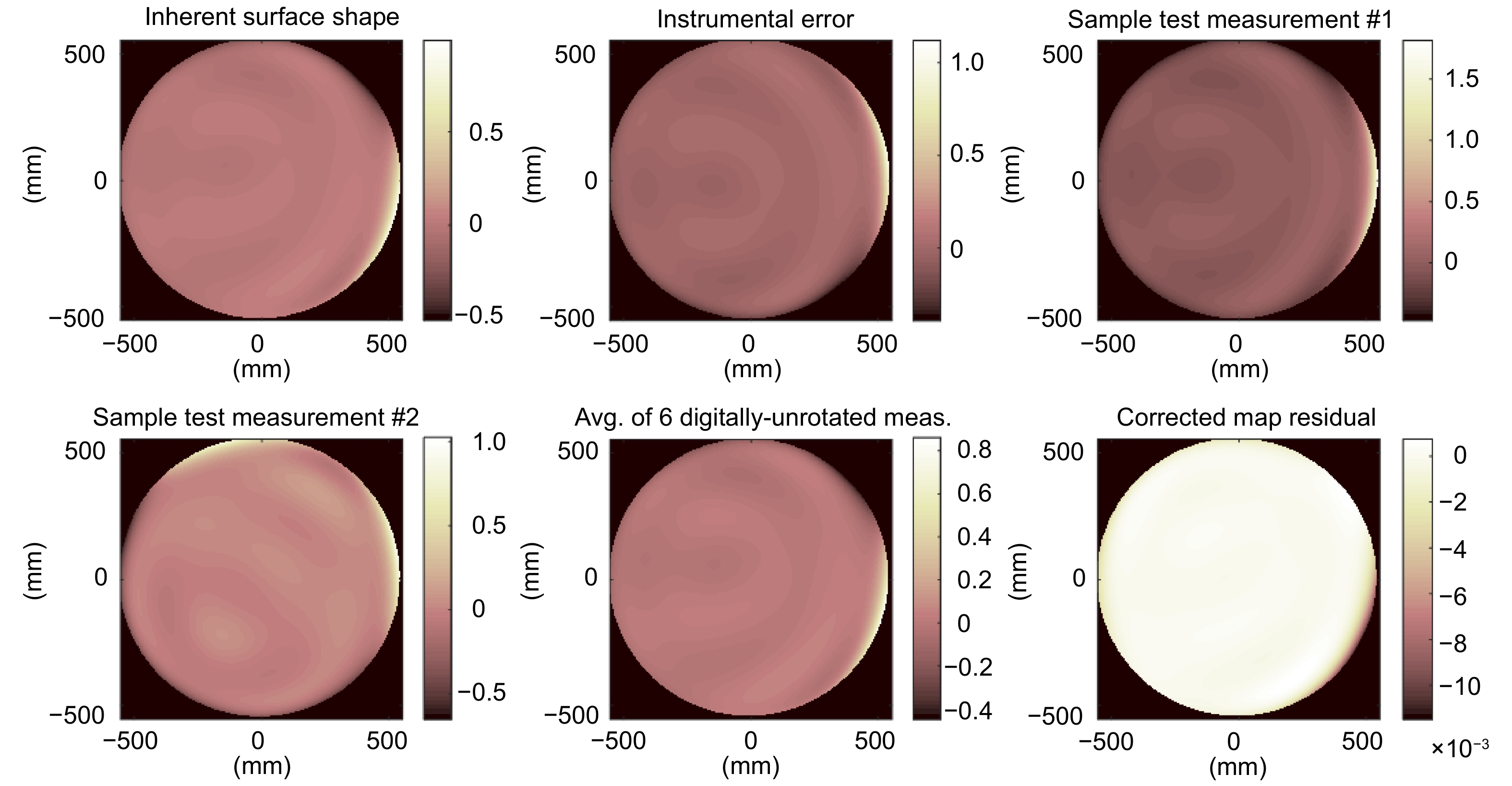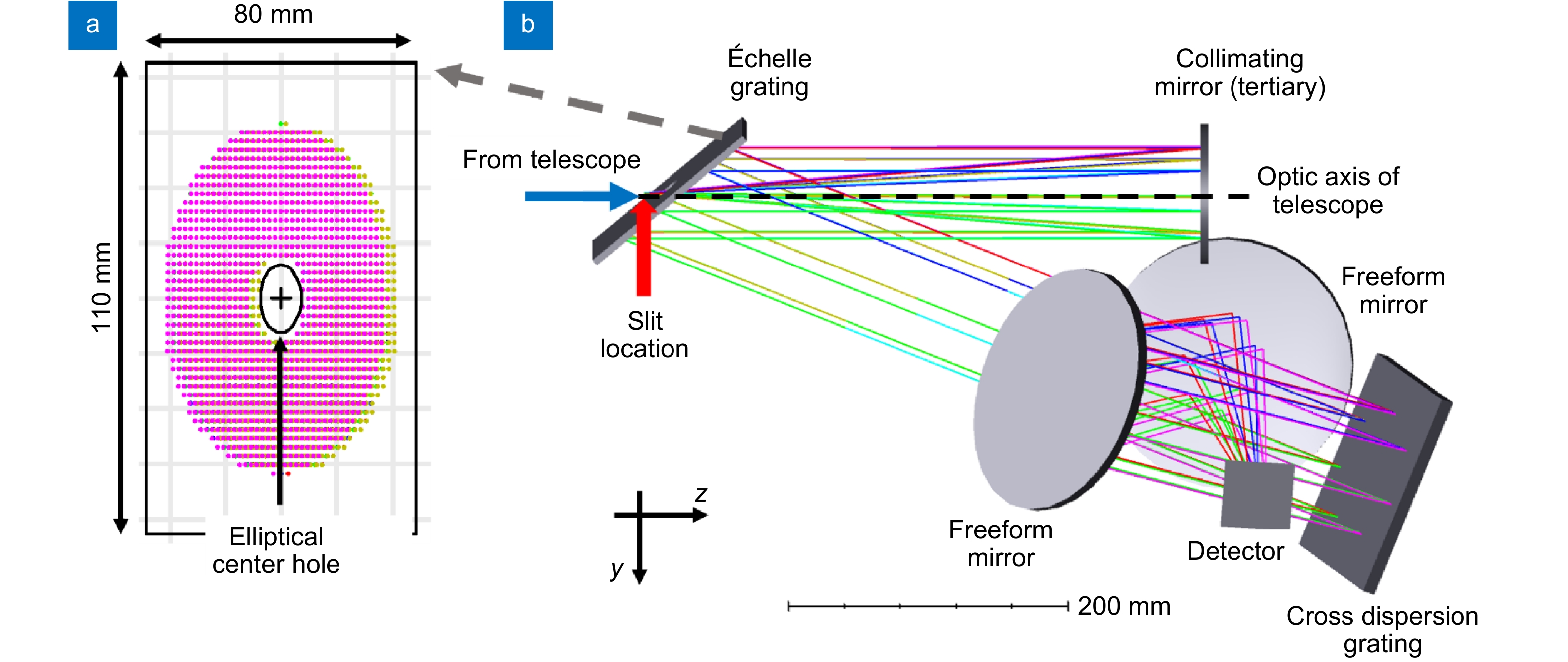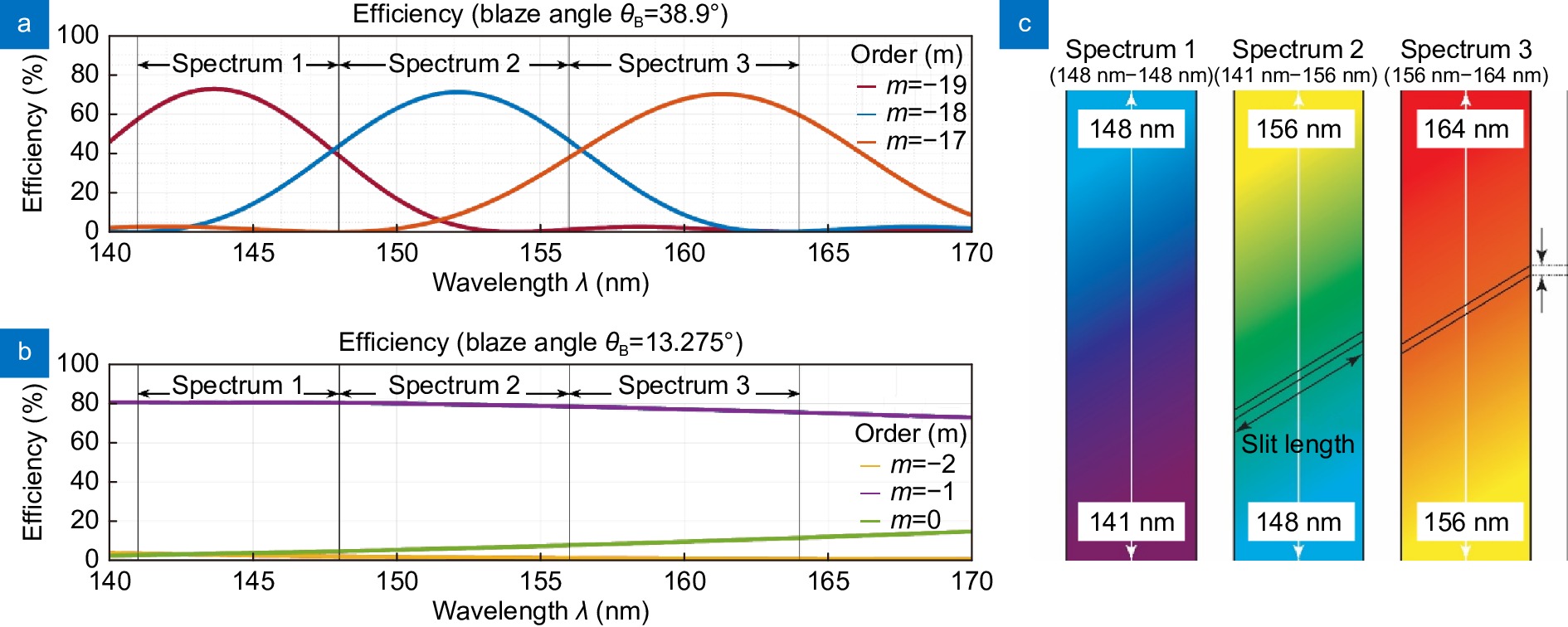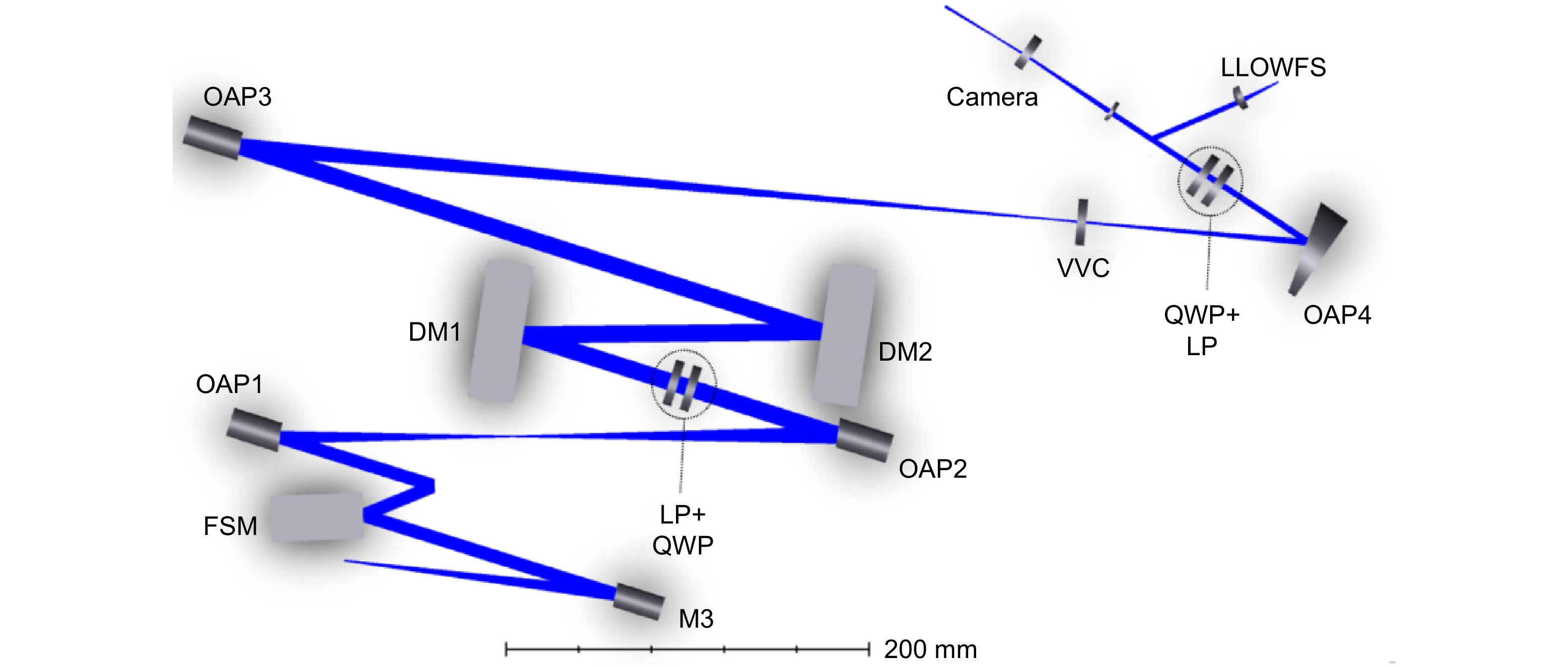| Citation: |
|
-
Abstract
Significant optical engineering advances at the University of Arizona are being made for design, fabrication, and construction of next generation astronomical telescopes. This summary review paper focuses on the technological advances in three key areas. First is the optical fabrication technique used for constructing next-generation telescope mirrors. Advances in ground-based telescope control and instrumentation comprise the second area of development. This includes active alignment of the laser truss-based Large Binocular Telescope (LBT) prime focus camera, the new MOBIUS modular cross-dispersion spectroscopy unit used at the prime focal plane of the LBT, and topological pupil segment optimization. Lastly, future space telescope concepts and enabling technologies are discussed. Among these, the Nautilus space observatory requires challenging alignment of segmented multi-order diffractive elements. The OASIS terahertz space telescope presents unique challenges for characterizing the inflatable primary mirror, and the Hyperion space telescope pushes the limits of high spectral resolution, far-UV spectroscopy. The Coronagraphic Debris and Exoplanet Exploring Pioneer (CDEEP) is a Small Satellite (SmallSat) mission concept for high-contrast imaging of circumstellar disks and exoplanets using vector vortex coronagraph. These advances in optical engineering technologies will help mankind to probe, explore, and understand the scientific beauty of our universe. -

-
References
[1] Martin HM, Allen RG, Burge JH, Kim DW, Kingsley JS et al. Fabrication and testing of the first 8.4-m off-axis segment for the Giant Magellan Telescope. Proc SPIE 7739, 77390A (2010). [2] Martin HM, Allen RG, Burge JH, Kim DW, Kingsley JS et al. Production of 8.4m segments for the Giant Magellan Telescope. Proc SPIE 8450, 84502D (2012). [3] Martin HM, Burge JH, Davis JM, Kim DW, Kingsley JS et al. Status of mirror segment production for the Giant Magellan Telescope. Proc SPIE 9912, 99120V (2016). [4] Martin HM, Allen R, Gasho V, Jannuzi BT, Kim DW et al. Manufacture of primary mirror segments for the Giant Magellan Telescope. Proc SPIE 10706, 107060V (2018). [5] Kim DW, Kim SW, Burge JH. Non-sequential optimization technique for a computer controlled optical surfacing process using multiple tool influence functions. Opt Express 17, 21850–21866 (2009). doi: 10.1364/OE.17.021850 [6] Ke XL, Wang TY, Choi H, Pullen W, Huang L et al. Dual-tool multiplexing model of parallel computer controlled optical surfacing. Opt Lett 45, 6426–6429 (2020). doi: 10.1364/OL.404575 [7] Kim DW, Park WH, Kim SW, Burge JH. Edge tool influence function library using the parametric edge model for computer controlled optical surfacing. Proc SPIE 7426, 74260G (2009). [8] Negi VS, Garg H, Shravan Kumar RR, Karar V, Tiwari UK et al. Parametric removal rate survey study and numerical modeling for deterministic optics manufacturing. Opt Express 28, 26733–26749 (2020). doi: 10.1364/OE.399105 [9] Wang TY, Huang L, Kang H, Choi H, Kim DW et al. RIFTA: a robust iterative Fourier transform-based dwell time Algorithm for ultra-precision ion beam figuring of synchrotron mirrors. Sci Rep 10, 8135 (2020). doi: 10.1038/s41598-020-64923-3 [10] Wang TY, Huang L, Zhu Y, Vescovi M, Khune D et al. Development of a position–velocity–time-modulated two-dimensional ion beam figuring system for synchrotron x-ray mirror fabrication. Appl Opt 59, 3306–3314 (2020). doi: 10.1364/AO.389010 [11] Rodriguez S, Rakich A, Hill J, Kuhn O, Brendel T et al. Implementation of a laser-truss based telescope metrology system at the Large Binocular Telescope. Proc SPIE 11487, 114870E (2020). doi: 10.1117/12.2576438 [12] Rakich A, Choi H, Veillet C, Hill JM, Bec M et al. A laser-truss based optical alignment system on LBT. Proc SPIE 11445, 114450R (2020). [13] Kang H, Thompson D, Conrad A, Vogel C, Lamdan A et al. Modular plug-in extension enabling cross-dispersed spectroscopy for Large Binocular Telescope. Proc SPIE 11116, 1111606 (2019). [14] Feng YT, Ashcraft JN, Breckinridge JB, Harvey JE, Douglas ES et al. Topological pupil segmentation and point spread function analysis for large aperture imaging systems. Proc SPIE 11568, 115680I (2020). [15] Apai D, Milster TD, Kim DW, Bixel A, Schneider G et al. A thousand earths: a very large aperture, ultralight space telescope array for atmospheric biosignature surveys. Astron J 158, 83 (2019). doi: 10.3847/1538-3881/ab2631 [16] Apai D, Milster TD, Arenberg J, Kim D, Liang R et al. Nautilus deep space observatory: a giant segmented space telescope array for a galactic biosignature survey. In Deep Space Gateway Concept Science Workshop 3127 (LPI, 2018). Bibcode: 2018LPICo2063.3127A [17] Apai D, Milster TD, Kim DW, Bixel A, Schneider G et al. Nautilus Observatory: a space telescope array based on very large aperture ultralight diffractive optical elements. Proc SPIE 11116, 1111608 (2019). [18] Milster TD, Apai D, Kim DW, Kim YS, Kim GH et al. Progress toward optical design and fabrication of ultralight, large aperture transmissive lenses for space telescopes. In Frontiers in Optics 2020 FM1A.2 (OSA, 2020); https://doi.org/10.1364/FIO.2020.FM1A.2. [19] Kim DW, Walker CK, Apai D, Milster TD, Takashima Y et al. Disruptive space telescope concepts, designs, and developments: OASIS and Nautilus -INVITED. EPJ Web Conf 238, 06001 (2020). doi: 10.1051/epjconf/202023806001 [20] Esparza MA, Choi H, Kim DW. Alignment of Multi-Order Diffractive Engineered (MODE) lens segments using the Kinematically-Engaged Yoke System. Proc SPIE 11487, 114870V (2020). doi: 10.1117/12.2569442 [21] Choi H, Esparza MA, Lamdan A, Feng TT, Milster T et al. In-process metrology for segmented optics UV curing control. Proc SPIE 11487, 114870M (2020). doi: 10.1117/12.2569310 [22] Walket CK, Smith IS, Goldsmith PF, O’Dougherty S, Takashima Y et al. Spherical reflectors for space based telescopes. In Proceedings of 2017 IEEE MTT-S International Microwave Symposium (IMS) 1884–1887 (IEEE, 2017); https://doi.org/10.1109/MWSYM.2017.8059024. [23] Chandra A, Sirsi S, Choi H, Phan A, Takashima Y et al. Thermally formed inflatable reflectors for space telescopes. In Proceedings of 2020 IEEE Aerospace Conference 1–9 (IEEE, 2020); https://doi.org/10.1109/AERO47225.2020.9172651. [24] Quach H, Berkson J, Sirsi S, Choi H, Dominguez R et al. Full-aperture optical metrology for inflatable membrane mirrors. Proc SPIE 11487, 114870N (2020). doi: 10.1117/12.2569750 [25] Choi H, Trumper IL, Feng YT, Kang H, Berkson J et al. Long-slit cross-dispersion spectroscopy for Hyperion UV space telescope. J Astron Telesc, Instrum, Syst 7, 014006 (2021). doi: 10.1117/1.JATIS.7.1.014006 [26] Choi H, Trumper I, Feng YT, Kang H, Hamden E et al. Hyperion: far-UV cross dispersion spectroscope design. Proc SPIE 11487, 114870W (2020). doi: 10.1117/12.2570489 [27] Maier ER, Douglas ES, Kim DW, Su K, Ashcraft JN et al. Design of the vacuum high contrast imaging testbed for CDEEP, the Coronagraphic Debris and Exoplanet Exploring Pioneer. Proc SPIE 11443, 114431Y (2020). [28] Kim DW, Esparza M, Quach H, Rodriguez S, Kang H et al. Optical technology for future telescopes. Proc SPIE 11761, 1176103 (2021). [29] Cheng H. Independent Variables for Optical Surfacing Systems: Synthesis, Characterization and Application. (Springer-Verlag, Berlin, 2014). [30] Carnal CL, Egert CM, Hylton KW. Advanced matrix-based algorithm for ion-beam milling of optical components. Proc SPIE 1752, 54–62 (1992). doi: 10.1117/12.130719 [31] Wu JF, Lu ZW, Zhang HX, Wang TS. Dwell time algorithm in ion beam figuring. Appl Opt 48, 3930–3937 (2009). doi: 10.1364/AO.48.003930 [32] Huang T, Zhao D, Cao ZC. Trajectory planning of optical polishing based on optimized implementation of dwell time. Precis Eng 62, 223–231 (2020). doi: 10.1016/j.precisioneng.2019.12.006 [33] Zhou L, Dai YF, Xie XH, Jiao CJ, Li SY. Model and method to determine dwell time in ion beam figuring. Nanotechnol Precis Eng 5, 107–112 (2007). [34] Zhang YF, Fang FZ, Huang W, Fan W. Dwell time algorithm based on bounded constrained least squares under dynamic performance constraints of machine tool in deterministic optical finishing. Int J Precis Eng Manuf-Green Technol (2021). doi: 10.1007/s40684-020-00306-3 [35] Jiao CJ, Li SY, Xie XH. Algorithm for ion beam figuring of low-gradient mirrors. Appl Opt 48, 4090–4096 (2009). doi: 10.1364/AO.48.004090 [36] Wilson SR, McNeil JR. Neutral ion beam figuring of large optical surfaces. Proc SPIE 0818, 320–324 (1987). doi: 10.1117/12.978903 [37] Wang TY, Huang L, Vescovi M, Kuhne D, Tayabaly K et al. Study on an effective one-dimensional ion-beam figuring method. Opt Express 27, 15368–15381 (2019). doi: 10.1364/OE.27.015368 [38] Richardson WH. Bayesian-based iterative method of image restoration. J Opt Soc Am 62, 55–59 (1972). doi: 10.1364/JOSA.62.000055 [39] Nelder JA, Mead R. A simplex method for function minimization. Comput J 7, 308–313 (1965). doi: 10.1093/comjnl/7.4.308 [40] Huang L, Wang TY, Tayabaly K, Kuhne D, Xu WH et al. Stitching interferometry for synchrotron mirror metrology at National Synchrotron Light Source II (NSLS-II). Opt Lasers Eng 124, 105795 (2020). doi: 10.1016/j.optlaseng.2019.105795 [41] Huang L, Wang TY, Nicolas J, Vivo A, Polack F et al. Two-dimensional stitching interferometry for self-calibration of high-order additive systematic errors. Opt Express 27, 26940–26956 (2019). doi: 10.1364/OE.27.026940 [42] Heidt J, Thompson D. LUCI Users Manual. September 7, 2016 https://sites.google.com/a/lbto.org/luci/documents-and-links. [43] Werenskiold CH. Improved telescope spider design. J Roy Astron Soc Can 35, 268 (1941). [44] Couder A. Dealing with spider diffraction. In Amateur Telescope Making (Book Two), Ingalls AG, ed, 8th Printing 620–622 (Scientific American, Inc, 1952). [45] Everhart E, Kantorski JW. Diffraction patterns produced by obstructions in reflecting telescopes of modest size. Astron J 64, 455 (1959). doi: 10.1086/107973 [46] Richter JL. Spider diffraction: a comparison of curved and straight legs. Appl Opt 23, 1907–1913 (1984). doi: 10.1364/AO.23.001907 [47] Harvey JE, Ftaclas C. Diffraction effects of telescope secondary mirror spiders on various image-quality criteria. Appl Opt 34, 6337–6349 (1995). doi: 10.1364/AO.34.006337 [48] Kasdin NJ, Vanderbei RJ, Spergel DN, Littman MG. Extrasolar planet finding via optimal apodized-pupil and shaped-pupil coronagraphs. Astrophys J 582, 1147–1161 (2003). doi: 10.1086/344751 [49] Breckinridge JB, Harvey JE, Crabtree K, Hull T. Exoplanet telescope diffracted light minimized: the pinwheel-pupil solution. Proc SPIE 10698, 106981P (2018). [50] Snik F, Absil O, Baudoz P, Beaulieu M, Bendek E et al. Review of high-contrast imaging systems for current and future ground-based and space-based telescopes III: technology opportunities and pathways. Proc SPIE 10706, 107062L (2018). [51] Breckinridge JB, Harvey JE, Irvin R, Chipman R, Kupinski M et al. ExoPlanet Optics: conceptual design processes for stealth telescopes. Proc SPIE 11115, 111150H (2019). [52] Harvey JE, Breckinridge JB, Irvin RG, Pfisterer RN. Novel designs for minimizing diffraction effects of large segmented mirror telescopes. Proc SPIE 10745, 107450L (2018). [53] Perrin M, Long J, Douglas E, Sivaramakrishnan A, Slocum C et al. POPPY: physical optics propagation in PYthon. Astrophysics Source Code Library, record ascl: 1602.018 (2016). [54] Perrin MD, Soummer R, Elliott EM, Lallo MD, Sivaramakrishnan A. Simulating point spread functions for the James Webb Space Telescope with WebbPSF. Proc SPIE 8442, 84423D (2012). doi: 10.1117/12.925230 [55] Ruane G, Riggs A, Coker CT, Shaklan SB, Sidick E et al. Fast Linearized Coronagraph Optimizer (FALCO) IV: coronagraph design survey for obstructed and segmented apertures. Proc SPIE 10698, 106984U (2018). doi: 10.1117/12.2312973 [56] N’Diaye M, Soummer R, Pueyo L, Carlotti A, Stark CC et al. Apodized pupil lyot coronagraphs for arbitrary apertures. Astrophys J 818, 163 (2016). doi: 10.3847/0004-637X/818/2/163 [57] Kim Y, Wang ZC, Milster T. Ultralight very large aperture space telescopes using MODE lens technology. In Optical Design and Fabrication 2019 FM4B.4 (OSA, 2019). https://doi.org/10.1364/FREEFORM.2019.FM4B.4. [58] Walker C, Kulesa C, Smith IS, Perry B, Takashima Y et al. Orbiting Astronomical Satellite for Investigating Stellar Systems (OASIS): following water from the interstellar medium to oceans. Bulletin of the AAS [Internet]. 2019 Sep 30;51(7). https://baas.aas.org/pub/2020n7i047. [59] Knauer MC, Kaminski J, Hausler G. Phase measuring deflectometry: a new approach to measure specular free-form surfaces. Proc SPIE 5457, 366–376 (2004). doi: 10.1117/12.545704 [60] Su P, Parks RE, Wang LR, Angel RP, Burge JH. Software configurable optical test system: a computerized reverse Hartmann test. Appl Opt 49, 4404–4412 (2010). doi: 10.1364/AO.49.004404 [61] Su TQ, Wang SS, Parks RE, Su P, Burge JH. Measuring rough optical surfaces using scanning long-wave optical test system. Appl Opt 52, 7117–7126 (2013). doi: 10.1364/ao.52.007117 [62] Evans CJ, Kestner RN. Test optics error removal. Appl Opt 35, 1015–1021 (1996). doi: 10.1364/ao.35.001015 [63] Decataldo D, Pallottini A, Ferrara A, Vallini L, Gallerani S. Photoevaporation of jeans-unstable molecular clumps. Mon Not Roy Astron Soc 487, 3377–3391 (2019). doi: 10.1093/mnras/stz1527 [64] Gould RJ, Salpeter EE. The interstellar abundance of the hydrogen molecule. I. Basic processes. Astrophys J 138, 393 (1963). doi: 10.1086/147654 [65] Krumholz MR. The big problems in star formation: the star formation rate, stellar clustering, and the initial mass function. Phys Rep 539, 49–134 (2014). doi: 10.1016/j.physrep.2014.02.001 [66] Smith WJ. Modern Lens Design 2nd ed (McGraw-Hill, New York, 2005). [67] Shannon RR. The Art and Science of Optical Design (Cambridge University Press, Cambridge, 1997). [68] Trumper I, Anderson AQ, Howard JM, West G, Kim DW. Design form classification of two-mirror unobstructed freeform telescopes. Opt Eng 59, 025105 (2020). doi: 10.1117/1.OE.59.2.025105 [69] West SC, Bailey SH, Bauman S, Cuerden B, Granger Z et al. A space imaging concept based on a 4m structured spun-cast borosilicate monolithic primary mirror. Proc SPIE 7731, 77311O (2010). doi: 10.1117/12.857750 [70] Allan G, Douglas ES, Barnes D, Egan M, Furesz G et al. The deformable mirror demonstration mission (DeMi) CubeSat: optomechanical design validation and laboratory calibration. Proc SPIE 10698, 1069857 (2018). [71] Morgan RE, Douglas ES, Allan GW, Bierden P, Chakrabarti S et al. MEMS deformable mirrors for space-based high-contrast imaging. Micromachines 10, 366 (2019). doi: 10.3390/mi10060366 [72] Mendillo CB, Howe GA, Hewawasam K, Martel J, Finn SC et al. Optical tolerances for the PICTURE-C mission: error budget for electric field conjugation, beam walk, surface scatter, and polarization aberration. Proc SPIE 10400, 1040010 (2017). [73] Mendillo CB, Hicks BA, Cook TA, Bifano TG, Content DA et al. PICTURE: a sounding rocket experiment for direct imaging of an extrasolar planetary environment. Proc SPIE 8442, 84420E (2012). [74] Chakrabarti S, Mendillo CB, Cook TA, Martel JF, Finn SC et al. Planet Imaging Coronagraphic Technology Using a Reconfigurable Experimental Base (PICTURE-B): the second in the series of suborbital exoplanet experiments. J Astron Inst 5, 1640004 (2016). doi: 10.1142/S2251171716400043 [75] Douglas ES, Mendillo CB, Cook TA, Cahoy KL, Chakrabarti S. Wavefront sensing in space: flight demonstration II of the PICTURE sounding rocket payload. J Astron Telesc, Instrum, Syst 4, 019003 (2018). [76] Belikov R, Lozi J, Pluzhnik E, Hix TT, Bendek E et al. EXCEDE technology development III: first vacuum tests. Proc SPIE 9143, 914323 (2014). [77] Sirbu D, Thomas SJ, Belikov R, Lozi J, Bendek E et al. EXCEDE technology development IV: demonstration of polychromatic contrast in vacuum at 1.2 λ/D. Proc SPIE 9605, 96050J (2015). [78] Tinker F, Ragan C, Bodden A, Dahlberg K. 2016. Silicon Carbide Optical Telescopes in “Small Satellite” Constellations. AIAA/USU Conference on Small Satellites, August. https://digitalcommons.usu.edu/smallsat/2016/Poster3/4. [79] Tinker F, Xin K. Fabrication of SiC aspheric mirrors with low mid-spatial error. Proc SPIE 8837, 88370M (2013). doi: 10.1117/12.2028014 [80] Mawet D, Serabyn E, Liewer K, Hanot C, McEldowney S et al. Optical vectorial vortex coronagraphs using liquid crystal polymers: theory, manufacturing and laboratory demonstration. Opt Express 17, 1902–1918 (2009). doi: 10.1364/OE.17.001902 [81] Mawet D, Serabyn E, Liewer K, Burruss R, Hickey J et al. The vector vortex coronagraph: laboratory results and first light at Palomar observatory. Astrophys J 709, 53–57 (2010). doi: 10.1088/0004-637X/709/1/53 [82] Ruane G, Crill B, Patterson K, Prada CM, Seo BJ et al. Decadal survey testbed commissioning roadmap: demonstrating technology for imaging new worlds. Jet Propulsion Laboratory, NASA ExEP Program roadmap, 11 (2019). [83] Serabyn G, Mawet D, Ruane G, Mejia-Prada C, Jovanovic N. Technology development for exoplanet MISSONS: technology milestone white paper vortex coronagraph technology. TDEM White Paper, JPL TDEM Whitepaper (2019). [84] Singh G, Martinache F, Baudoz P, Guyon O, Matsuo T et al. Lyot-based low order wavefront sensor for phase-mask coronagraphs: principle, simulations and laboratory experiments. Publ Astron Soc Pac 126, 586–594 (2014). doi: 10.1086/677048 [85] Belikov R, Give’on A, Kern B, Cady E, Carr M et al. Demonstration of high contrast in 10% broadband light with the shaped pupil coronagraph. Proc SPIE 6693, 66930Y (2007). doi: 10.1117/12.734976 [86] Pueyo L, Stark C, Juanola-Parramon R, Zimmerman N, Bolcar M et al. The LUVOIR Extreme Coronagraph for Living Planetary Systems (ECLIPS) I: searching and characterizing exoplanetary gems. Proc SPIE 11117, 1111703 (2019). doi: 10.1117/12.2530722 [87] Kasdin NJ, Bailey VP, Mennesson B, Zellem RT, Ygouf M et al. The Nancy grace roman space telescope coronagraph instrument (CGI) technology demonstration. Proc SPIE 11443, 114431U (2020). doi: 10.1117/12.2562997 [88] Mazoyer J, Pueyo L. Fundamental limits to high-contrast wavefront control. Proc SPIE 10400, 1040014 (2017). doi: 10.1117/12.2274657 -
Access History

Article Metrics
-
Figure 1.
Large polishing machine (LPM) with dual tools at the University of Arizona. Figure reproduced with permission from ref.6, Optical Society of America.
-
Figure 2.
Flow of velocity adjustment algorithm. Figure reproduced with permission from ref.6, Optical Society of America.
-
Figure 3.
The results of simulation: (a–b) two sequential single-tool runs using Tool1 followed by Tool2, (c) in-in feed with equal-angle path, (c) in-out feed with equal angle path, (d) in-in feed with equal-arc-length path, and (f) in-out feed with equal-arc-length path. Figure reproduced with permission from ref.6, Optical Society of America.
-
Figure 4.
Flow of RIFTA dwell time algorithm.
-
Figure 5.
(a) Initial surface error map from real measurement, (b−f) dwell time calculation results, and (g−k) estimated residuals in the CA without using RIFTA (b, g), adding γ optimization (c, h), adding inner iterations (d, i), adding outer iterations (e, j), and resampling to 1 mm (f, k).
-
Figure 6.
Two 8.4 m in diameter LBT primary mirrors and the science instruments between the two mirrors in the middle of the telescope structure. Figure reproduced from LBTO.
-
Figure 7.
Laser truss configuration on the LBT prime focus mode. Laser trusses extend from nine collimators around the primary mirror to three retroreflectors on the prime focus camera, with three collimators aligned to each retroreflector. Additionally, there are two nearly orthogonal channels to monitor the diameter of the mirror. Figure reproduced with permission from ref.11, SPIE.
-
Figure 8.
(a) The ability of the TMS to measure pose was validated using commanded Rx motion on the primary mirror. (b) Horizontal and vertical first-order coma Zernike coefficients, produced using a perturbed LBT optical model, show the anticipated variability for on-axis and off-axis fields. Figure reproduced with permission from ref.11, SPIE.
-
Figure 9.
Schematic presenting the major steps in transforming raw channel length measurements to a “change of pose” correction vector. The core functionality of the TCP/IP software lies in the shaded, starred box. Figure reproduced with permission from ref.12, SPIE.
-
Figure 10.
(a) Optical layout of MOBIUS. Each MOBIUS module consists of a right-angle mirror, a spherical mirror as collimator, and a dispersing prism which is made of Strontium titanate (SrTiO3). The incident beam from LBT will be deflected by the right-angle mirror near the focal plane. (b) As MOBIUS will utilize existing slit mask frame, it requires no modification to current LUCI hardware settings. Figure reproduced with permission from ref.13, SPIE.
-
Figure 11.
(a) Without MOBIUS, zJHK spectra are overlapped so filters are required to distinguish each band. (b) MOBIUS provides dispersion in the perpendicular direction (shown as in this diagram). As demonstrated, we can simultaneously obtain zJHK spectra simultaneously with 2.3 arcsecond of maximum slit length without overlap. Figure reproduced with permission from ref.13, SPIE.
-
Figure 12.
(a) Spot diagram at the LBT focal plane of K-band. The RMS radius of spot size is increased when MOBIUS is introduced. However, considering the expected spot size delivered by the telescope is 150 µm, the variation caused by MOBIUS is insignificant. (b) Ensquared energy diagram at the LUCI detector plane of K-band. Similarly, the variation induced by MOBIUS is negligible as the pixel size of detector is 18 µm. Figure reproduced from: (a) ref.13, SPIE; (b) ref.42, LUCI.
-
Figure 13.
(a) Pictures of fabricated MOBIUS optics elements. The size of optics is limited to fit in slit mask frame. (b) Modeling of the MOBIUS-installed frame. To compensate the added weight from MOBIUS, the frame has light-weighted features.
-
Figure 14.
A thin, circular arc obscuration with an angle of φ lying in the aperture plane is shown on the left. Such obscuration gives rise the “bow-tie/searchlight effect46, 49, 53in the Fraunhofer diffraction pattern shown on the right.
-
Figure 15.
Illustration of the segmented pupil topologies studied in this session, and all of them have the same aperture diameter of 12 m and gap width of 20 mm. The reflectance of the pupil is color-coded with black and white, the white area is the reflecting surface (mirror), while the black one shows the obscured area. Figure reproduced with permission from ref.14, SPIE.
-
Figure 16.
The normalized PSFs of pupils in Fig. 15, subtracted with that of the circular pupil in Fig. 15(a), i.e. ideal Airy disk function. Note that every PSF is normalized to the peak value before the subtraction is performed.
-
Figure 17.
(a) Conceptual space deployment image of the Nautilus array in orbit. (b) A color-corrected MODE lens developed by the Nautilus team. (c) A molded Gen4 MODE lens prototype using low-temperature glass.
-
Figure 18.
(a) The assembled KEYS prototype. (b) A cross-section view showing the contact points of the ball bearings on the step-like features of the MODE lens. Figure reproduced with permission from ref.20, SPIE.
-
Figure 19.
The real data from the metrology system. (a) Live view from the camera. (b) All segments are well-aligned against initial co-phasing status. The black line represents the actual size of the single segment. It measures the unobscured area (from the KEYS structure), which is large enough to sense and monitor the misalignment. (c) Segment 3 drifted from the reference position and the measured tilting angle is 0.006°. (The X and Y axis units of (b) and (c) are in pixels.) Figure reproduced with permission from ref.21, SPIE.
-
Figure 20.
Schematic diagram showing a mock-up MODE lens segment (i.e., Mock Lens Segment) mounted on the automatic KEYS adopting computer-controlled stepper motor actuators to make closed-loop orientation and position adjustments (i.e., alignment and co-phasing) to the mock-up MODE lens segments.
-
Figure 21.
Conceptual rendered image of the OASIS space observatory with a 20-metrer diameter inflatable primary aperture (yellow disk-like membrane on the right side of the image).
-
Figure 22.
A coarse tool such as a laser distance gauge can easily measure the longitudinal distance within 2 millimeters. The shape error sensitivity is vastly dominated by the lateral calibration errors εy or εx, which require 300 microns of accuracy to meet the global measurement requirement. Since the compact deflectometer head is portable and quasi-kinematically mounted, this can easily be achieved in an offsite coordinate measuring machine.
-
Figure 23.
A simulation showing inherent surface shape and instrument test error is provided. Sample test measurement 1 and 2 differ in that a rotated surface shape was added to the static instrumental error map to produce them. ‘Unrotating’ each of the six maps to the original unclocked positions produces an average that is remarkably similar to the true inherent surface shape. Taking the difference between this average and underlying inherent surface shape yields an error of less than 0.5% of the systematic error originating from the measuring instrument.
-
Figure 24.
(a) Front view of the inflatable 1-meter OASIS primary aperture prototype solid model. (b) The deflectometer head is mounted onto a telescope mount and features a typical machine vision camera, a high-quality LCD display, and a laser for alignment with the test mirror’s optical axis. The deflectometry assembly (LCD screen, laser, and camera) was affixed to an OPTRON telescope mount with 3 DOFs so alignment could be achieved between the mechanical axis of the OASIS 1-meter prototype and the calibrated center point of the deflectometer.
-
Figure 25.
The rendering image of the UV space telescope Hyperion examining the fuel for star formation by probing the nature, extent, and state of H2 at the crucial atomic-to-molecular interstellar medium boundary layer25, 26. Figure reproduced with permission from ref.25, SPIE.
-
Figure 26.
The cross-dispersion spectroscopy optics layout (b) and beam footprint on the échelle grating plane (a). Figure reproduced with permission from ref.25, SPIE.
-
Figure 27.
The diffraction efficiency calculation results for (a) échelle grating and (b) cross dispersion and (c) spectrum distribution on the 52 mm × 52 mm sensor plane. The three orders of the échelle grating are overlapped, but those are separated by cross dispersion horizontally on the sensor. The high-order of échelle grating dispersive the spectrum rapidly, and it implements the R >30000. Figure reproduced with permission from ref.25, SPIE.
-
Figure 28.
(a) Optomechanical rendering of the CDEEP optical configuration showing the unobscured SiC telescope and integrated optical bench. (b) Raytrace of the coronagraph optical train beginning at the secondary mirror M2. Figure reproduced with permission from ref.27, SPIE.
-
Figure 29.
An expanded realization of the CDEEP testbed with two deformable mirrors to study a coronagraph’s ability to correct diffraction features that result from heavily segmented pupils (e.g., LUVOIR86) or secondary support spiders (e.g., Nancy Grace Roman Space Telescope87) using the Active Correction for Aperture Discontinuities technique88.

 E-mail Alert
E-mail Alert RSS
RSS
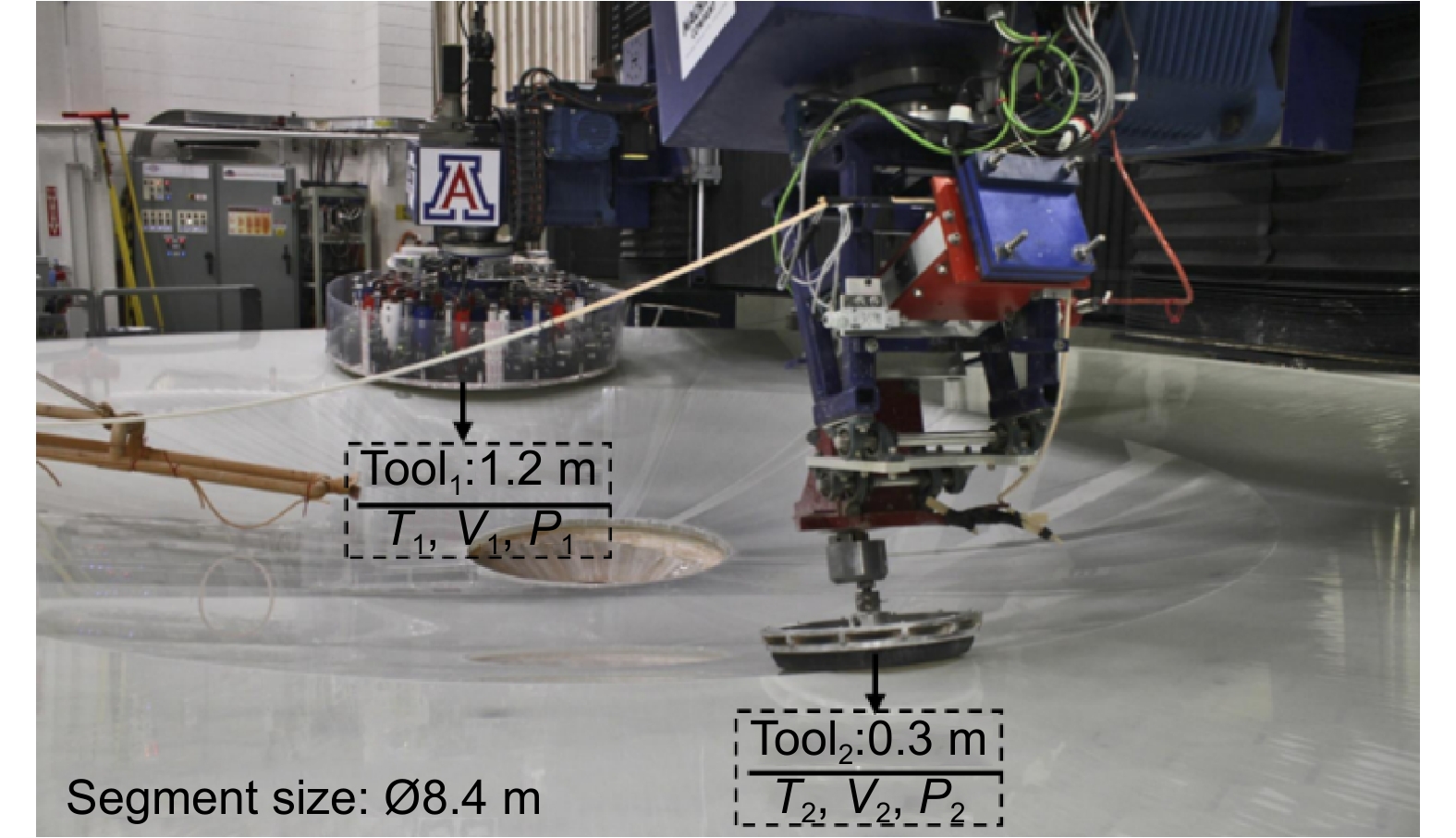


 DownLoad:
DownLoad:
